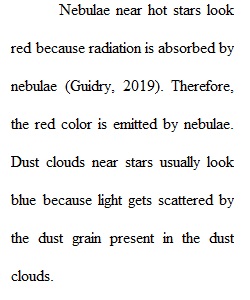


Q Assignment Instructions Research each of the following four topics and submit your answers in a document in .docx (Word) format. 1. Why do nebulae near hot stars look red? Why do dust clouds near stars usually look blue? 2. Describe how the 21-cm line of hydrogen is formed. Why is this line such an important tool for understanding the interstellar medium? 3. Give several reasons the Orion molecular cloud is such a useful “laboratory” for studying the stages of star formation. 4. Explain why we have learned a lot about star formation since the invention of detectors sensitive to infrared radiation. Your submission should be one to two pages, 12-point font, double spaced. Please include your last name in the document filename.
View Related Questions